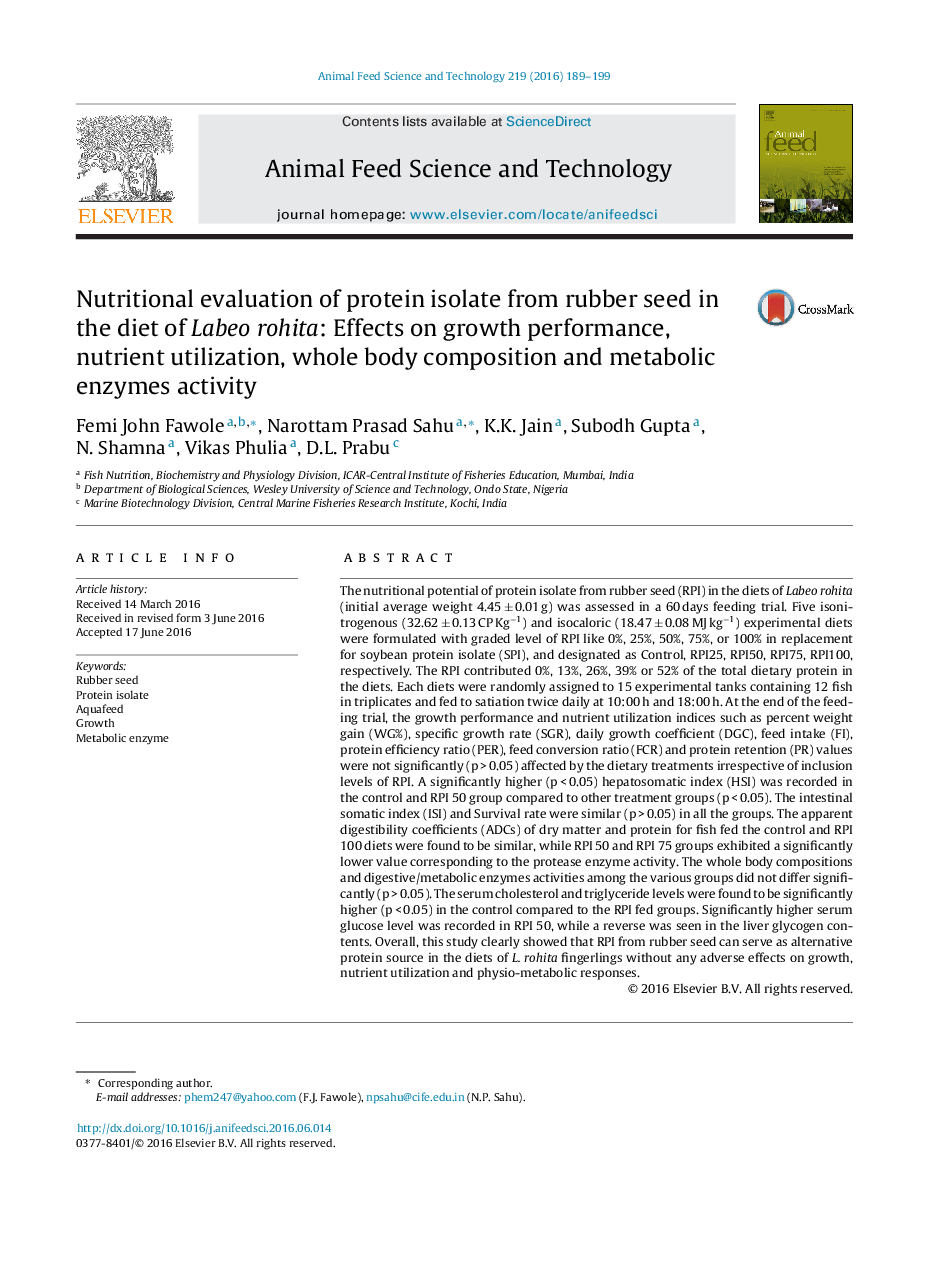| Article ID | Journal | Published Year | Pages | File Type |
|---|---|---|---|---|
| 8491171 | Animal Feed Science and Technology | 2016 | 11 Pages |
Abstract
The nutritional potential of protein isolate from rubber seed (RPI) in the diets of Labeo rohita (initial average weight 4.45 ± 0.01 g) was assessed in a 60 days feeding trial. Five isonitrogenous (32.62 ± 0.13 CP Kgâ1) and isocaloric (18.47 ± 0.08 MJ kgâ1) experimental diets were formulated with graded level of RPI like 0%, 25%, 50%, 75%, or 100% in replacement for soybean protein isolate (SPI), and designated as Control, RPI25, RPI50, RPI75, RPI100, respectively. The RPI contributed 0%, 13%, 26%, 39% or 52% of the total dietary protein in the diets. Each diets were randomly assigned to 15 experimental tanks containing 12 fish in triplicates and fed to satiation twice daily at 10:00 h and 18:00 h. At the end of the feeding trial, the growth performance and nutrient utilization indices such as percent weight gain (WG%), specific growth rate (SGR), daily growth coefficient (DGC), feed intake (FI), protein efficiency ratio (PER), feed conversion ratio (FCR) and protein retention (PR) values were not significantly (p > 0.05) affected by the dietary treatments irrespective of inclusion levels of RPI. A significantly higher (p < 0.05) hepatosomatic index (HSI) was recorded in the control and RPI 50 group compared to other treatment groups (p < 0.05). The intestinal somatic index (ISI) and Survival rate were similar (p > 0.05) in all the groups. The apparent digestibility coefficients (ADCs) of dry matter and protein for fish fed the control and RPI 100 diets were found to be similar, while RPI 50 and RPI 75 groups exhibited a significantly lower value corresponding to the protease enzyme activity. The whole body compositions and digestive/metabolic enzymes activities among the various groups did not differ significantly (p > 0.05). The serum cholesterol and triglyceride levels were found to be significantly higher (p < 0.05) in the control compared to the RPI fed groups. Significantly higher serum glucose level was recorded in RPI 50, while a reverse was seen in the liver glycogen contents. Overall, this study clearly showed that RPI from rubber seed can serve as alternative protein source in the diets of L. rohita fingerlings without any adverse effects on growth, nutrient utilization and physio-metabolic responses.
Related Topics
Life Sciences
Agricultural and Biological Sciences
Animal Science and Zoology
Authors
Femi John Fawole, Narottam Prasad Sahu, K.K. Jain, Subodh Gupta, N. Shamna, Vikas Phulia, D.L. Prabu,
